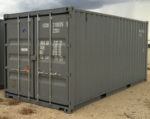
Alex Mills
By Alex Mills
Great news from the Texas Commission on Environmental Quality in that Texas air quality continues to improve. As a matter of fact, TCEQ’s web page proclaims that “2014 ozone levels were the best ever in much of the state.”
“Texas’ air quality has made huge strides in the past few decades,” TCEQ stated. “Not that long ago, Houston and Los Angeles dueled for the dubious honor of having the worst ozone in the country. Now, using EPA’s latest figures, ozone levels in DFW and Houston are comfortably better than those of Los Angeles.”
Houston-area eight-hour ozone levels have improved 29 percent between 2000 and 2014 while the population has increased more than 34 percent.
In the Dallas-Fort Worth area, eight-hour ozone levels have likewise improved 21 percent during the last 15 years while the population grew more than 29 percent.
The Corpus Christi and Tyler-Longview-Marshall areas have seen 20 and 30 percent reductions in ozone over the last 15 years.
The Austin-Round Rock and Beaumont-Port Arthur areas have seen ozone improvements of 22 percent and 20 percent during this same period, respectively.
TCEQ stated that nine of the state’s 13 areas that have had at least 15 years of regulatory ozone monitoring recorded the lowest or tied the lowest ozone values in 2014.
“Better air quality has been achieved through targeted emission-reduction strategies,” TCEQ stated. Key improvements have come from electric generating plants and oil and gas compressors.
The report noted the oil and gas production has expanded rapidly near the San Antonio and DFW areas, “but the TCEQ’s scientific studies have not to date seen significant contributions of oil and gas activities to ozone levels in those metropolitan areas.”
TCEQ’s report stated that there have been several changes enacted during the last decade to address the state’s growing economy and population and their potential impact on air emissions. TCEQ implemented a new permit by rule and standard permit systems in the Barnett Shale. Also, another new rule involves a permit by rule for new maintenance, startup, and shutdown of equipment in the oil and gas sector. EPA enacted new standards, called Subpart OOOO, and TCEQ has the delegated authority.
Even though Texas has achieved outstanding results, the EPA has lowered ozone standards to 75 parts per billion (ppb). The previous standard was 84 ppb, and the DFW (81 ppb) and Houston (80 ppb) areas both reached attainment. However, the new 75 ppb standard makes both areas and San Antonio non-attainment areas.
“Recently, the EPA has proposed even lower ozone standards, in the 65-70 ppb range, and has requested comments on retaining the current standard or lower the standard to 60 ppb. Studies say that, to reach 60 ppb, sources in these Texas areas would have to reduce NOx emissions by as much as 75 percent from the levels of 2008-2010, depending on the final standard,” TCEQ said.
“It’s difficult to see how that will be achieved, since NOx emissions have already been drastically reduced, and background levels of ozone entering an area sometimes approach or exceed 60 ppb,” according to TCEQ.
Alex Mills is President of the Texas Alliance of Energy Producers. The opinions expressed are solely of the author.


















Speak Your Mind